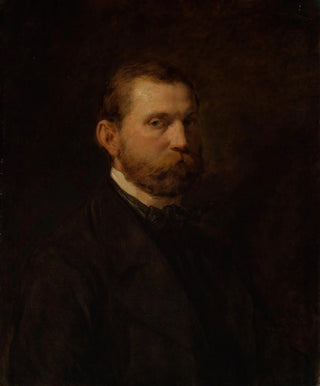Art print | The private advisor Félix Picot - Hans Canon


View from behind

Frame (optional)
In the vast panorama of art history, certain works stand out for their ability to capture the essence of an era and evoke deep emotions. "The Private Advisor Félix Picot" by Hans Canon is one of those creations that transcends the simple portrait to become a true window into the past. This artwork, created in the 19th century, immerses us in the universe of an influential man of his time, while revealing the subtleties of a rapidly evolving art form. By contemplating this art print, the viewer is invited to explore not only the figure of Félix Picot but also the social and cultural context in which he operated.
Style and uniqueness of the work
Hans Canon's style in "The Private Advisor Félix Picot" is a striking example of the realism that characterizes his oeuvre. Every detail, from facial features to the drapery of clothing, is executed with meticulous precision, demonstrating undeniable technical mastery. Light plays a crucial role, highlighting the nuances of the skin and the reflections of fabrics, thus creating a depth effect that brings the character to life. Canon manages to establish an emotional connection between the subject and the viewer, making this portrait not only a reflection of Picot's appearance but also an exploration of his personality. The choice of pose, slightly relaxed, suggests a quiet confidence, while Picot's piercing gaze seems to address us directly, inviting us to discover the subtleties of his character.
The artist and his influence
Hans Canon, born in Vienna in 1820, was an artist whose career illustrates the tensions between tradition and modernity. Trained in a rich artistic environment, he was able to incorporate influences from past masters while opening up to innovations of his time. His work is marked by a particular attention to portraits, where he excels at capturing not only physical appearance but also the soul of his models. As a court artist, Canon had the opportunity to paint many influential figures of his era, which allowed him to leave a lasting imprint on the art world. His style, both accessible and refined, has inspired many contemporary and later artists, contributing to shaping

Matte finish

View from behind

Frame (optional)
In the vast panorama of art history, certain works stand out for their ability to capture the essence of an era and evoke deep emotions. "The Private Advisor Félix Picot" by Hans Canon is one of those creations that transcends the simple portrait to become a true window into the past. This artwork, created in the 19th century, immerses us in the universe of an influential man of his time, while revealing the subtleties of a rapidly evolving art form. By contemplating this art print, the viewer is invited to explore not only the figure of Félix Picot but also the social and cultural context in which he operated.
Style and uniqueness of the work
Hans Canon's style in "The Private Advisor Félix Picot" is a striking example of the realism that characterizes his oeuvre. Every detail, from facial features to the drapery of clothing, is executed with meticulous precision, demonstrating undeniable technical mastery. Light plays a crucial role, highlighting the nuances of the skin and the reflections of fabrics, thus creating a depth effect that brings the character to life. Canon manages to establish an emotional connection between the subject and the viewer, making this portrait not only a reflection of Picot's appearance but also an exploration of his personality. The choice of pose, slightly relaxed, suggests a quiet confidence, while Picot's piercing gaze seems to address us directly, inviting us to discover the subtleties of his character.
The artist and his influence
Hans Canon, born in Vienna in 1820, was an artist whose career illustrates the tensions between tradition and modernity. Trained in a rich artistic environment, he was able to incorporate influences from past masters while opening up to innovations of his time. His work is marked by a particular attention to portraits, where he excels at capturing not only physical appearance but also the soul of his models. As a court artist, Canon had the opportunity to paint many influential figures of his era, which allowed him to leave a lasting imprint on the art world. His style, both accessible and refined, has inspired many contemporary and later artists, contributing to shaping






